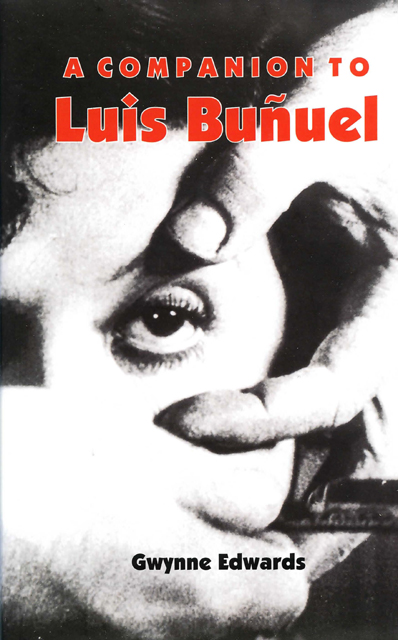1 - Buñuel and the Surrealists
Published online by Cambridge University Press: 05 May 2023
Summary
Luis Buñuel, without question one of the outstanding film-directors of the twentieth century, has always been regarded, together with such talents as Salvador Dalí, Max Ernst, René Magritte and Paul Éluard, as one of the great surrealist creative artists. In the 1920s his association with Salvador Dalí led to the making of Un Chien andalou in 1929, immediately acclaimed by André Breton, leader of the Paris surrealist group, as a true surrealist film. Its combined elements of shock, horror, dream, sex, illogicality and antibourgeois sentiments, utterly at odds with conventional film-making and all an essential part of surrealist thinking, are as striking today as they were more than seventy years ago, and the opening sequence of the eye-ball sliced by a cut-throat razor – filmed in close-up – never fails to turn the stomach of an unsuspecting cinema audience. These are elements, moreover, which Buñuel continued to exploit to a greater or lesser degree in a career that extended from his first film to his last, That Obscure Object of Desire, in 1977. We need only think of the dream sequences, the sexual preoccupations, and the assaults on conventional moral values in such films as The Forgotten Ones, Viridiana, The Exterminating Angel, Belle de jour and The Discreet Charm of the Bourgeoisie, in order to understand why Buñuel has always been regarded as a surrealist, even if in the later work his attitude had somewhat mellowed. Nevertheless, the picture is not as simple or as straightforward as it seems. Buñuel’s cultural background, as well as his personality, was a complicated one, and this complexity is fully reflected both in his life and his work.
Buñuel’s personality – tough, hard-hitting and unsentimental – found a natural affinity in the bold avant-garde movements that swept through Europe in the first decades of the twentieth century. Born in 1900 in the village of Calanda – population less than 5,000 – in the northern province of Aragón, he shared the down-to-earth, no-nonsense view of life of his fellow Aragonese, Francisco Goya. Although Buñuel’s home background, unlike Goya’s, was extremely comfortable, this did not prevent him from being exposed as a child to the harsh realities of life in Calanda, to which the family frequently returned even after they moved to the nearby city of Zaragoza when Buñuel was barely four months old.
- Type
- Chapter
- Information
- A Companion to Luis Buñuel , pp. 17 - 46Publisher: Boydell & BrewerPrint publication year: 2005



